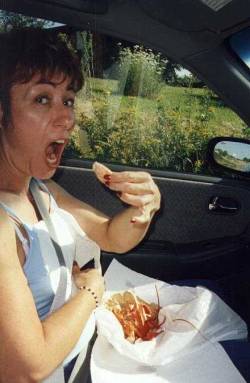
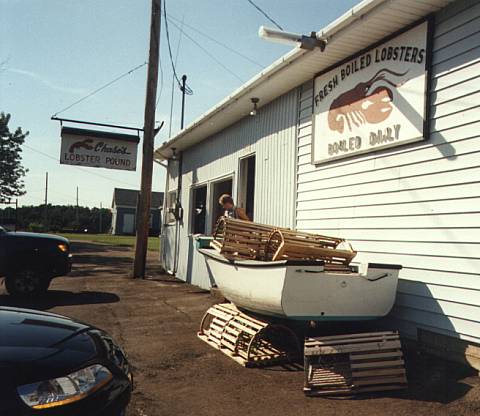
We left Prince Edward Island the way we came, across the bridge to New Brunswick. Our route takes us off the main highway in favour of smaller, more interesting roads that stay close to the Northumberland Strait. Just before we left New Brunswick we stopped in at the Winegarden Estate's winery in Baie Verte. After favourably sampling their wares, we left with a Cranberry fruit wine and some bottles of Apple wine. The Cranberry was an excellent find! In fact we made sure that our journey home would pass by the winery while it was open, and eventually brought home half-a-dozen bottles. Our sampling and purchases from the more well known Jost Vineyards in Malagash, a couple of days later, couldn't surpass the Cranberry Wine from Winegarden Estate.
Just east of the winery we entered Nova Scotia. This spot is just about at the narrowest land connection between Nova Scotia and New Brunswick. It's the site of the eastern terminus of the Chignecto Marine Transport Railway, a failed 19th century plan to move sailing ships across this isthmus from the Bay of Fundy to the Gulf of St Lawrence.
And just down the coastal road near Port Howe was Chase's Lobster Pound. Marsha gives Chase's the 'Best Fresh Lobster Award' of the trip. I have to congratulate Marsha on her amazing ability to devour her lobsters in the car without splattering the interior with fishy flesh. We actually stayed in motels that had signs posted in the rooms prohibiting the eating freshly boiled lobster!
 |

|
We found the northern coastal region between New Brunswick and Cape Breton (The Sunrise Trail) to be rich in history and landscape and spent more time exploring here than we expected to.
The BEACHESIt's here where we first found beaches with weather and water warm enough for swimming. We stopped at Heather Beach, a classic of golden sand. It was a scorching hot day, and the ocean water so inviting, that I must have spent over an hour drifting and floating with the everpresent jellyfish. They were quite beautiful, even if a little spooky.And later we camped at Caribou/Munroes Island Provincial Park where the ocean was a two minute walk away through a woodland trail that opened up to grassy bluffs overlooking the red sand beach. |
 | |
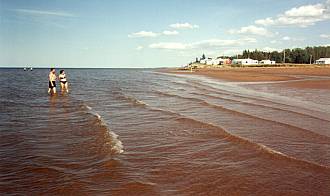 |
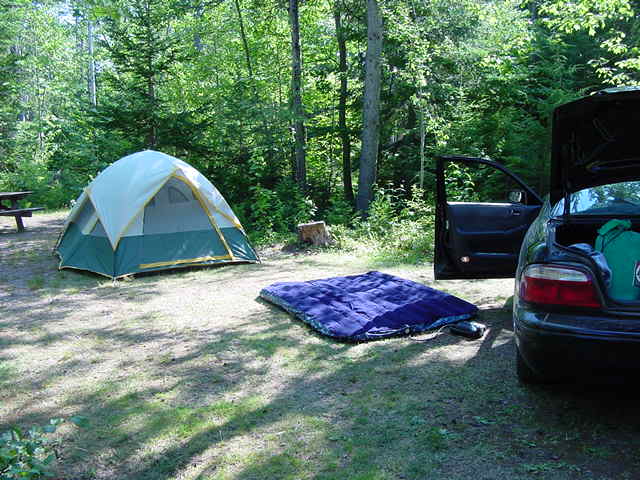 | |
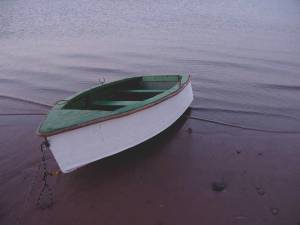 |
| And I found this rock that bears an uncanny resemblence to my own head. | 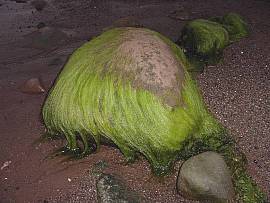 |
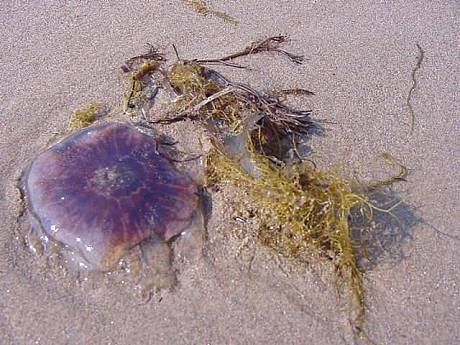 |
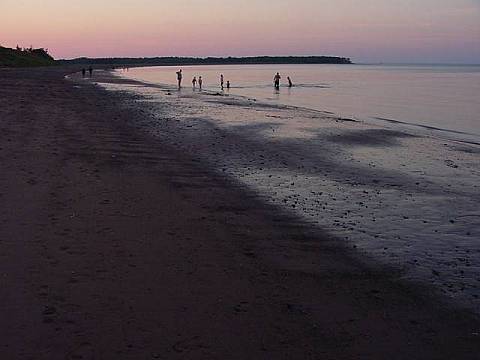 |
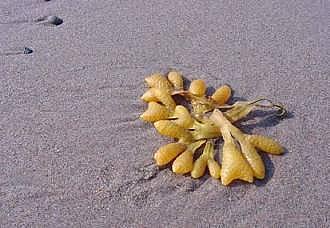 |
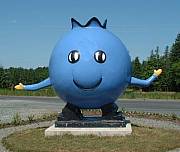 |
Wild Blueberries are everywhere!
The coffee shop muffins are literally bursting with fruit.
And as a drink Pumphouse Blueberry Beer was a pleasant and refreshing surprise! The lowbush wild blueberry plant, Vaccinium angustifolium, is native to, and most fecund in, the coastal regions of Eastern Canada, west from Newfoundland through all the Canadian Maritime provinces and Quebec, and south into Maine. Traditionally a wild blueberry grower just "minds" the fields. Crop management techniques, such as an annual burning, were adopted from the practices of the native Americans. |
| Above: Mr. Blueberry from Oxford NS, the Wild Blueberry Capital of Canada | |
1 cup serving NO sodium and NO fat!Here's the full nutritional analysis |
|
The marketing and sales of wild blueberries has become a global enterprise. Opportunities and problems abound. The wild blueberry is not quite comfortable in it's role as a domesticated plant. A lot of time and money has been spent studying the plant, it's diseases and pests, defining operating procedures for farmers to follow, designing machines that harvest and prune, and creating a demand for the product. |
Eden Lake, Nova ScotiaInteresting story from a farmer who grew up in a family that traditionally hand-picked wild blueberries when they were actually 'wild'. He describes how he's currently clearing forest land and planting wild blueberries.** Some very busy web design. I recommend replying NO when asked by the web site whether to install and run Crescendo. |
The Migrant Farmworker - Losing the battle against mechanization."Last year, independent growers received the same price (31 cents) they received in 1976. Cherryfield Foods, a subsidiary of a Canadian frozen foods conglomerate, is now the largest blueberry grower in Maine, owning or managing over 12,000 acres of land. It once hired 800-1,200 rakers per season. It now makes do with 250." |
Yet, don't lose sight of the purpose of all this activity: